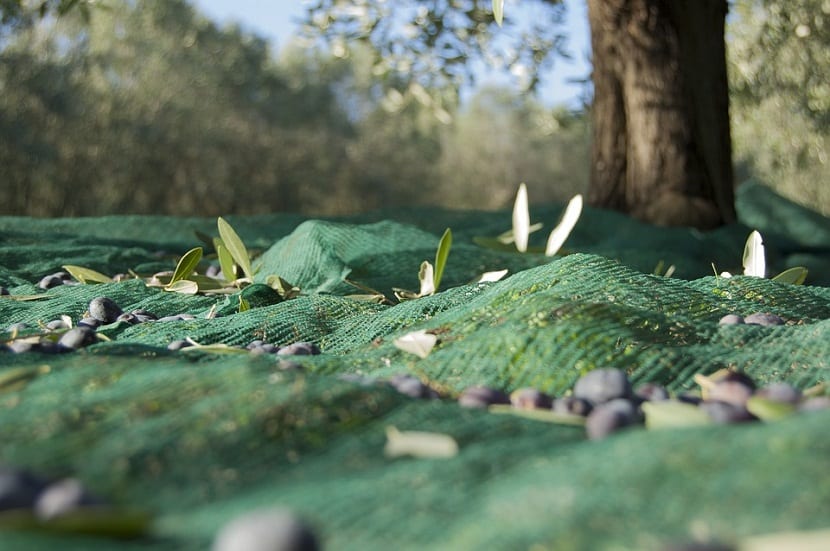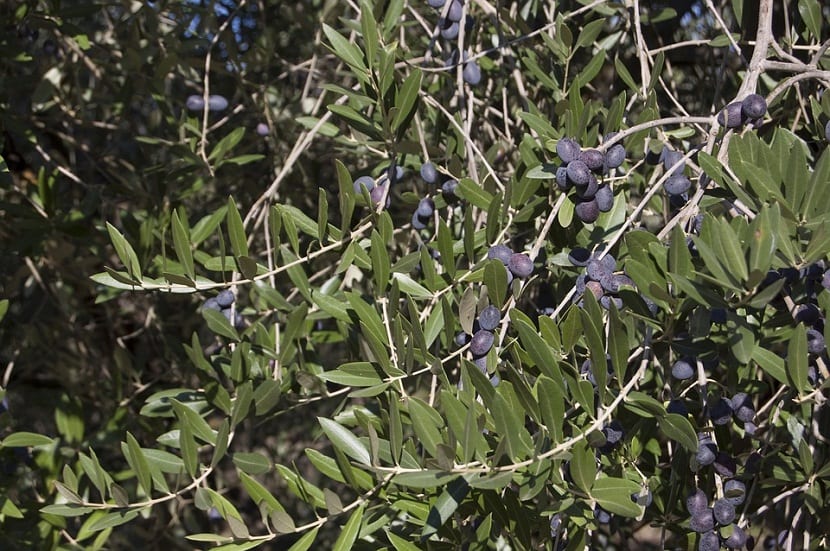
From a botanical point of view, olives belong to a special group of fruits called drupes, which they are fruits that have a seed inside, surrounded by a larger meaty or fibrous portion.
When are the olives harvested?

Autumn is the time for the olives to be harvested.but when exactly are they collected?, since the harvest time is essential for both oil and table olives.
En general, the period is from October to the end of December. But the factors that determine the right time are multiple, such as the type of olive (early or late), what needs to be obtained and above all, the weather conditions.
In the case of table olives, the fruit must be large and rich in pulpWhile to obtain a sweet and slightly acidic oil, the fruit must not be excessively ripe.
In fact, oil quality depends on the quality of the pressing and oil production. For this reason, many believe that the best time to harvest is during veraison, which is the time when the fruit changes color from purple to black.
At this time there is a higher quantitative oil concentration and phenolic substances that give the organoleptic and nutritional qualities to the oil.
Olive harvesting methods
Based on the use of certain olive harvesting methods, the final product assumes different aspects and organoleptic characteristics, which are also reflected in the final cost and the level of quality, these being the main techniques used:
Burning
Ideal for low floors, tends to have the advantage of not damaging the olives, avoids the formation of fermentation processes that quickly raise the acidity values of the oil. The highest quality oils are produced with this technique.
The process is slow and precise and allows you to choose the olives by hand and select them.
Hit the olives
It is a very old method that consists, as its name indicates, in hit the branches with sticks. This movement causes the olives to fall, which are collected in large nets arranged on the surface of the ground, under the foliage of the trees.
The negative aspect of this process is that the fruits that fall can change their consistency and also, tree structure can be damaged.
The hairstyle
As the name implies, the branches of the trees are combed with special tools that allow the olives to fall.
The recollection
Harvesting is nothing more than the harvest of spontaneously fallen olives, but also it is the worst method, since like all fruits, olives fall when they are excessively ripe and therefore do not produce quality oil.
In addition, the fruits can rot and become contaminated with mold and bacteria.
Displacement
Often associated with the prior art, the movement allows the olives to be harvested once they are ripe, following the movement of the tree trunk with special machines. At the end of the harvest, the olives are stored for up to 48 hours in well-ventilated baskets and then taken to the mill.
Stages of ripening of olives

Olives can be harvested at different times or stages of maturation, thus obtaining different products:
Herbaceous stage
It is generally reached during the month of October, although in some cases it can occur in early December.
In this stage, olives are rich in chlorophyll and the oil obtained contains many antioxidant substances. The flavor of the oil will be particularly fruity and with that touch of pleasant spice.
Complete maturation
At this stage the olives are ripe at their correct point, have purplish to black skin and oils with a sweeter taste can be obtained. The "danger" of this phase is that ripe olives if they fall to the ground, they can be affected by bacteria, mold or mud.
Over ripening
The oils obtained from overripe olives have a less intense flavor and a lower quality.